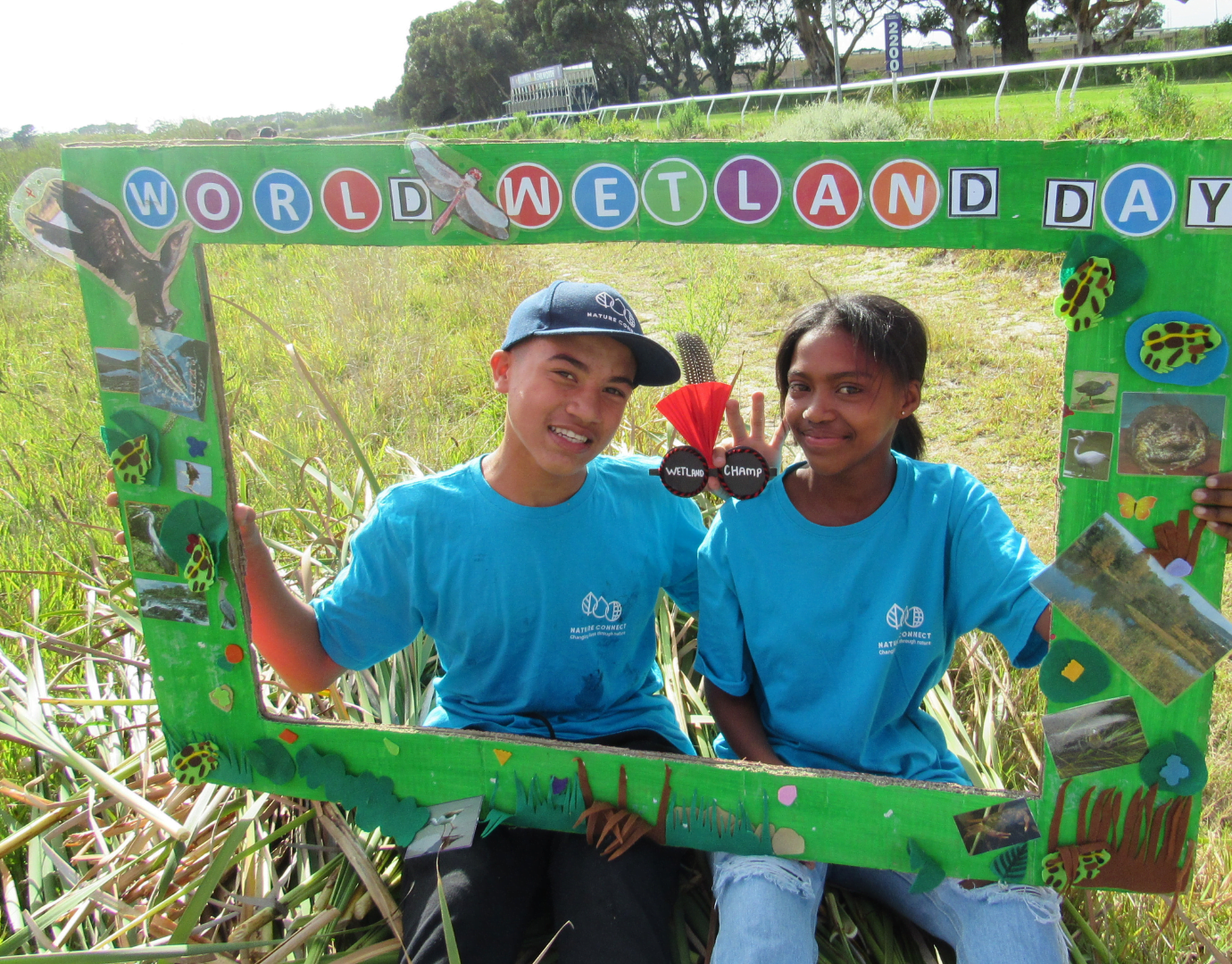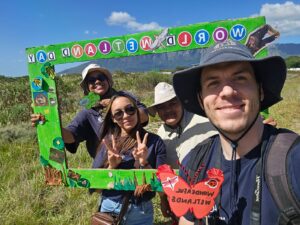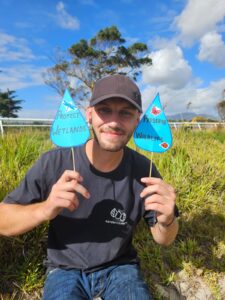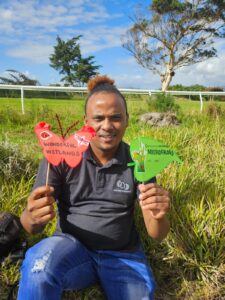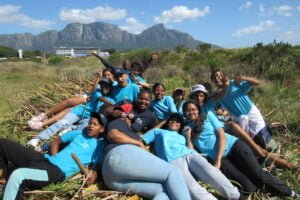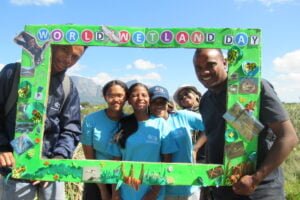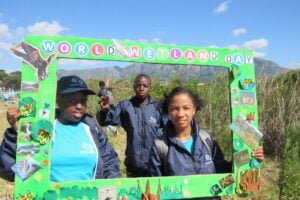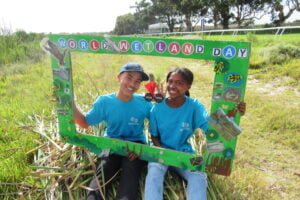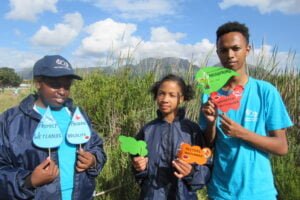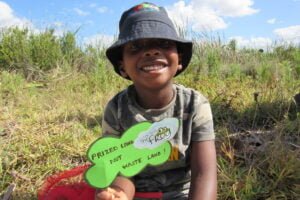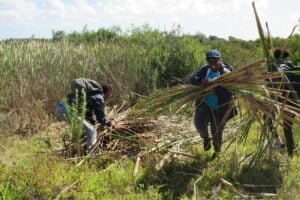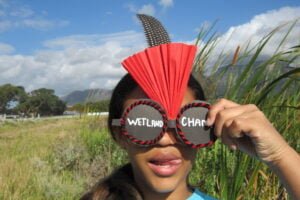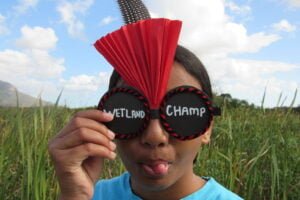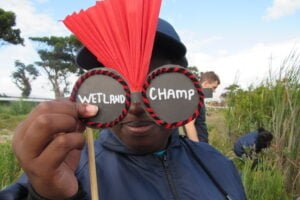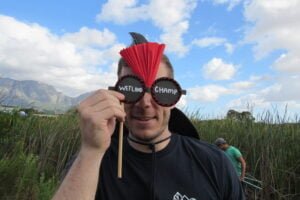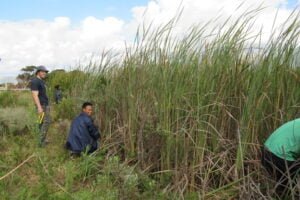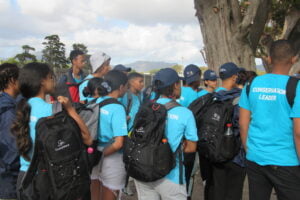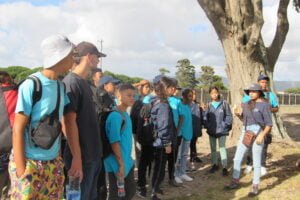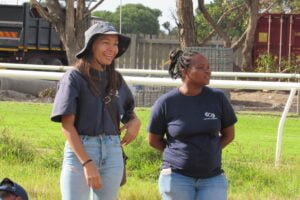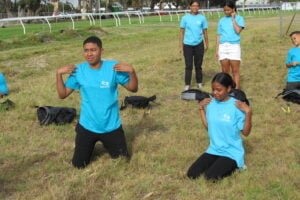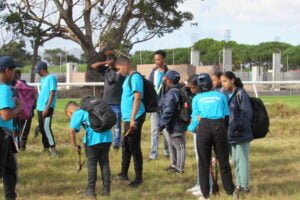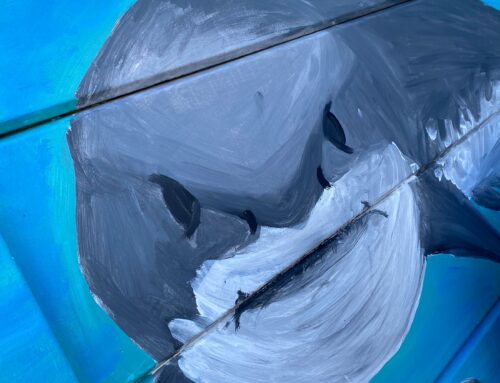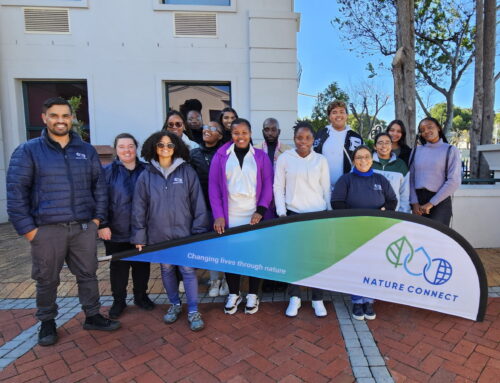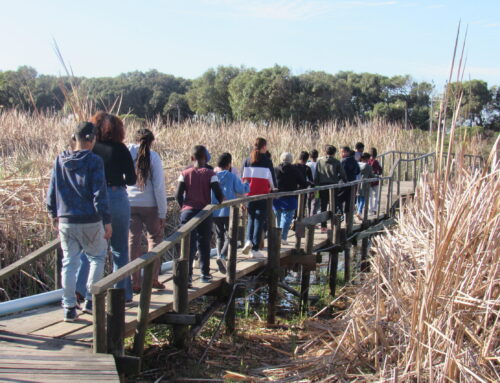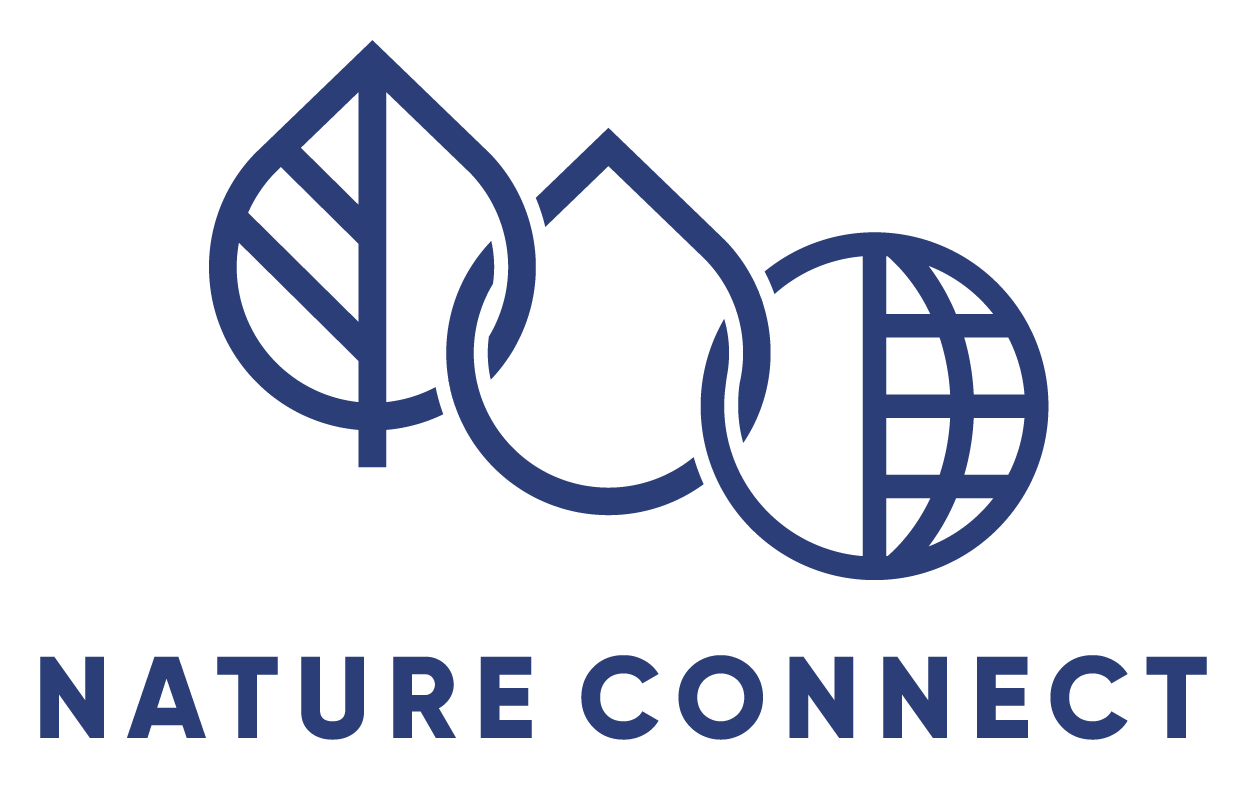Written by Fayruz Prins
Wetlands are among the most biodiverse ecosystems in the world, harbouring 40% of the world’s plants and animals. Some endemic species are so niche they rely solely on wetlands for their survival. Unfortunately, wetlands are disappearing at an alarming rate of three times faster than forests.
Kenilworth Racecourse Conservation Area (KRCA) celebrated World Wetlands Month this year together with 21 students who are passionate about nature and belong to Nature Connect’s Conservation Leaders programme. These young leaders wish to make a positive impact on the environment and their community. With nurturing from Nature Connect they are proving to become ambassadors for future sustainability in our environment. On Saturday the 10th of February they participated in removing Bulrush (Typha capensis) from one of the 16 seasonal wetlands at KRCA. This indigenous species is commonly found throughout wetlands in southern Africa. They play an important role in removing excess nutrients from wetlands and thus are very effective filters. However, when conditions are favourable these reeds spread and close out open waterbodies, changing the wetland habitat. They outcompete other aquatic plants by reproducing exponentially through vegetative reproduction.
Our mission was to cut the reeds manually using loppers and allowing the groundwater to drown the roots. The wetlands at KRCA are among the most biologically diverse hotspots surrounded by urbanisation. Home to the only population of critically endangered Micro Frogs (Microbatrachella capensis) within the southern suburb satellite wetlands. With only 4 known subpopulations left in the wild, their last few localities are of utmost importance for their survival. These thumbnail sized frogs are highly sensitive to disturbance and have unfortunately lost a large extent of suitable habitat due to urban expansion, agriculture, invasive alien plant species and water pollution which has resulted in their severe conservation status. They are listed as Critically Endangered on the IUCN Red List. The wetlands at KRCA have been a haven for micro frogs for years and surveys have shown the population is stable with natural dispersal occurring onsite to wetlands where they have never been recorded before, one being the wetland that the reeds were removed from.
Wetlands are known to be biological supermarkets as they supply an abundance of food attracting a variety of animals. They form the basis of the food-web with an intricate relationship among the organisms inhibiting it from microbes, fish, amphibians, birds, plants, reptiles and many more which differ between wetlands around the world. However, humans also benefit from wetlands daily as they provide us with invaluable ecological services such as being an effective storage for carbon during the changing climate. They are a natural defense against floods by slowing the flow of water and dispersing it slowly over an area. They also act as nature’s natural kidneys, by filtering pollutants and improving the quality of available water. Other than the ecosystem services we can gain from wetlands, they also provide a wealth of economic benefits from the natural resources. Economically, wetlands provide resources, while culturally, they hold religious and historical significance. Shifting our perspective from considering them as wastelands to prized land is essential for society’s overall well-being.

